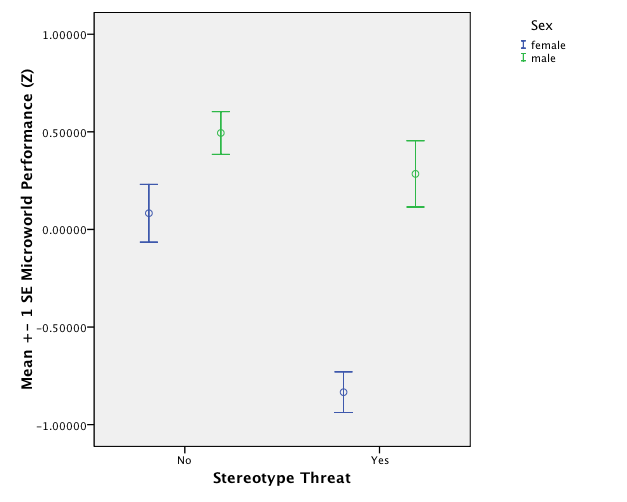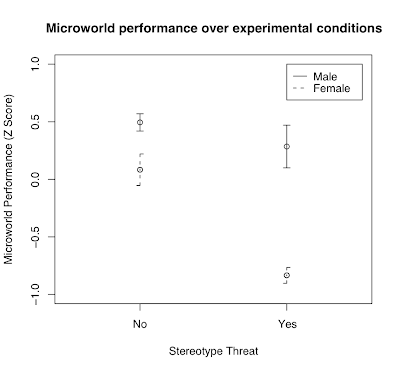Dear Ladies and Gentlemen at
SPSS Inc,
As a psychologist working in experimental research, the statistical analysis of data is the bread and butter of my daily work. Like the majority of my colleagues in the social sciences, I use the de-facto industry-standard for this task:
SPSS; the very product your company is bulit on, the very product that is supposed to deliver a "statistical package for the social sciences" - what SPSS originally stood for before it became a brand.
Let me remind you that this is an exclusive piece of software that comes with a steep price tag of $639 for the single base version for higher-education institutions ($1699 for commercial users).
I am writing you this open letter concerning the quality of your most recent version of
SPSS for the Mac - the first version that runs on intel-based Macs, SPSS 16.0 for Mac.
SPSS 16 for Mac - that I have to use on a frequent basis - is the most insulting piece of software I ever came across. I have been frequently annoyed by software in my life time, but this is the first time that I actually feel insulted by a commercial piece of software. Its astonishingly poor interface design and the long list of bugs I discovered during a single week of intense usage make me wonder whether SPSS 16 for Mac was ever used for its intended purpose at your company before you dared to ship it to us - your end users and customers. Do you think that just because we're scientists, you can throw this half-baked crap at us?
The poor impression begins right after double-clicking the icon, when SPSS displays its spalsh screen:

Non-English characters, as they appear in the name of my organization (Universität Zürich), are not displayed correctly. Your programmers have obviously never heard of proper internationalization.
Secondly, the overall appearance makes me think its 1996.

Especially the tool-bar looks exactly like I would expect a toolbar to look like in a 1990s piece of cheap shareware:

I mean, honestly, is this some kind of joke? This interface does neither convey any informational value nor scientific professionalism (if that was intended). The only thing it conveys is your utter lack of interface design principals.
But apart from such minor issues (as you seem to think that UI design is a minor issue), the list of bugs in SPSS that I came across during a single week of working with SPSS 16.0 for Mac is mind-blowing.
- Double-clicking a saved viewer output in the finder opens an empty data file instead. Double-clicking the output in the finder again leads to an error-message that tells me that the file is already open (which it isn't).
- If I go through the cumbersome process of defining input parameters for a data file in text format, and save the parameters as a template for future imports, I cannot load the template the next time I want to use it. When I click on the template file in the open template-dialog, nothing happens.
- If I select "Data... -> Merge Files -> Insert Variables", choose an external file and tell SPSS to add certain variables from that file to my current file while dropping others, the resulting syntax produces an error and nothing happens.
- Importing variables with values that are stored in the decimal format (e. g. "4.023") from a text file produce missing values, i.e. they're not imported at all despite the fact that they're displayed correctly in the preview of the import wizard. Changing the variable type from numeric to string doesn't help.
- The menu bar in the output viewer disappears from time to time. Only quitting and restarting SPSS brings it back.
- When re-opening a saved viewer file, the font face of all custom-edited headlines is changed from Arial 16 to Times New Roman 12.
- Overall performance is incredibly slow.
- In the output-viewer, double-clicking a diagram for editing and closing it again sometimes leads to all changes being lost.
These are just the most prominent bugs I came across. I am sure that there is more where that came from. Do you have any kind of testing whatsoever at SPSS? What kind of impression do you think such experiences create? On my part, it creates the impression that you disrespect your users.
According to Eric Sink, there are
three categories of software:
- MeWare: The developer creates software. The developer uses it. Nobody else does.
- ThemWare: The developer creates software. Other people use it. The developer does not.
- UsWare: The developer creates software. Other people use it. The developer uses it too.
For me, SPSS is an extreme example of ThemWare. You seem to have no clue about the poor quality you're creating - at least for the Mac. This impression is extremely stark because I have to use your products alongside beautifully designed pieces of software such as
bibDesk, Apple Pages, and Apple Mail.
In my opinion, there is a piece of statistical software that is just the opposite of SPSS:
R. It doesn't sport a graphical interface such as SPSS (it's syntax only, like SPSS used to be), but it's certainly more powerful, creates better graphs, and is built and maintained by a community of people that care for their product and actually use it. I've been trying R alongside SPSS for six months now and I haven't come across a single bug. If R had a powerful graphical interface, your product would be off the market within a week.
My experience with SPSS 16 for Mac will make me change to R once and for all. Furthermore, I will encourage my colleagues to do the same.
Frustrated,
Bertolt Meyer
Note: The link to the three categories of software stems from Jeff Atwoods coding horror.
Update: Two more bugs I can reproduce:
- Copy and Paste from Excel is not working
- Importing Excel Files produces "?" as values after the 40th variable
Update 2: According to
this sitemeter-entry, someone from SPSS has read this post. I wonder whether I will receive a reply.
Update 3: The story has been picked up
elsewhere and
SPSS replied.
Labels: bugs, mac, os x, software, spss, statistics

 I like it very much; the only thing I need to work out is how to offset the bars in the same conditions so that overlapping error bars don't actually overlap but are drawn next to each other with a few pixels between them.
I like it very much; the only thing I need to work out is how to offset the bars in the same conditions so that overlapping error bars don't actually overlap but are drawn next to each other with a few pixels between them.







